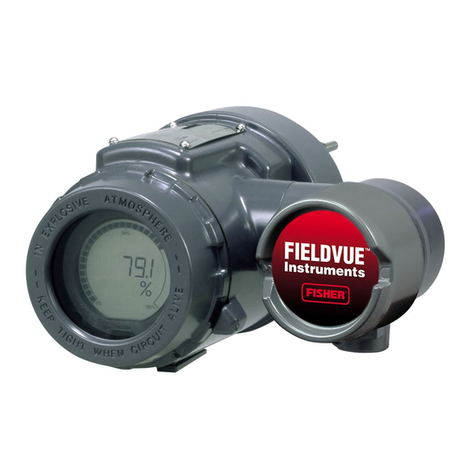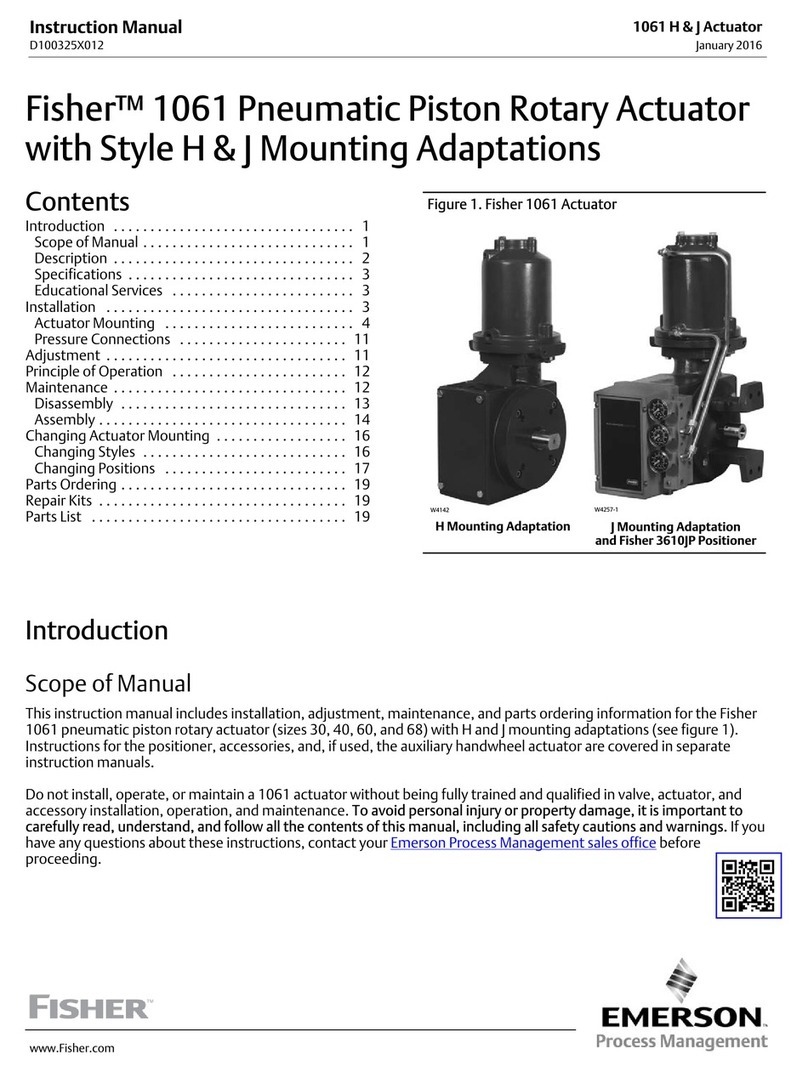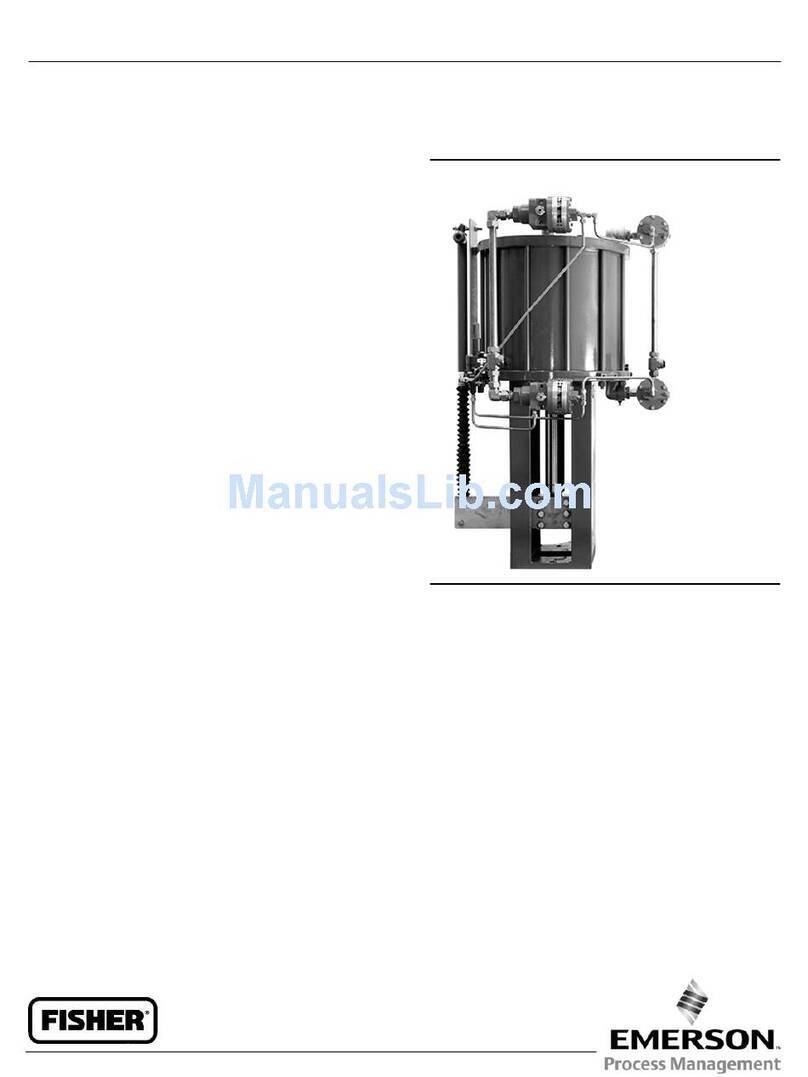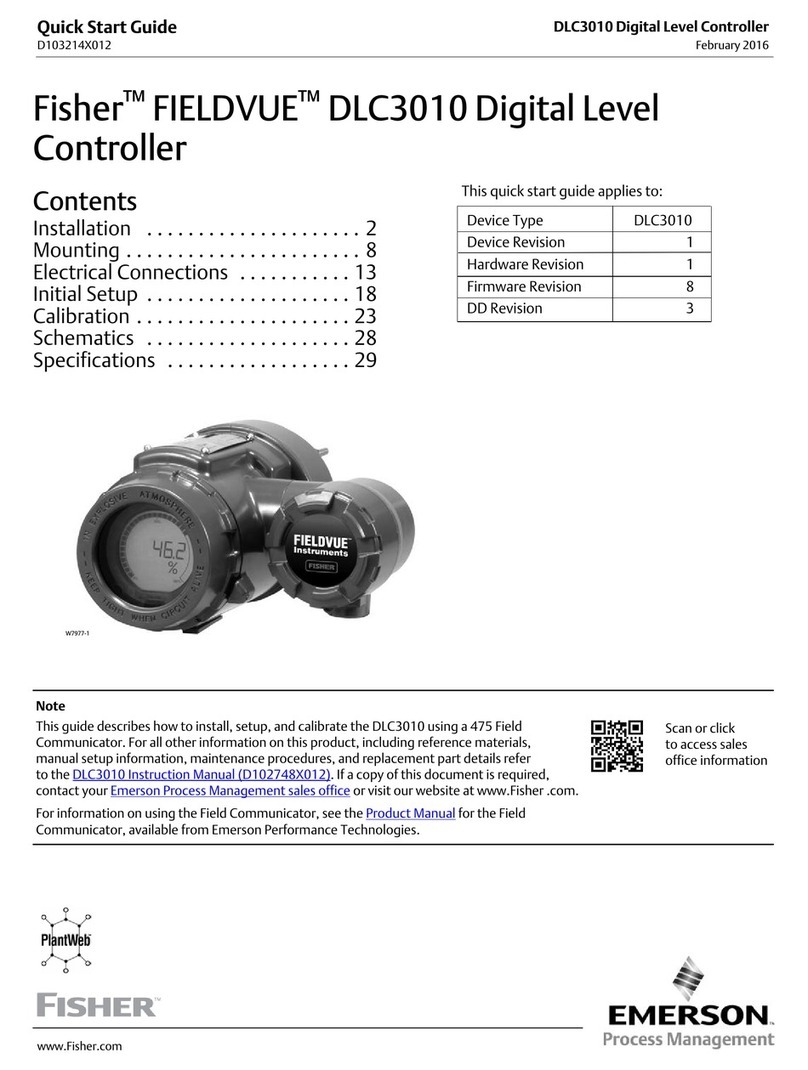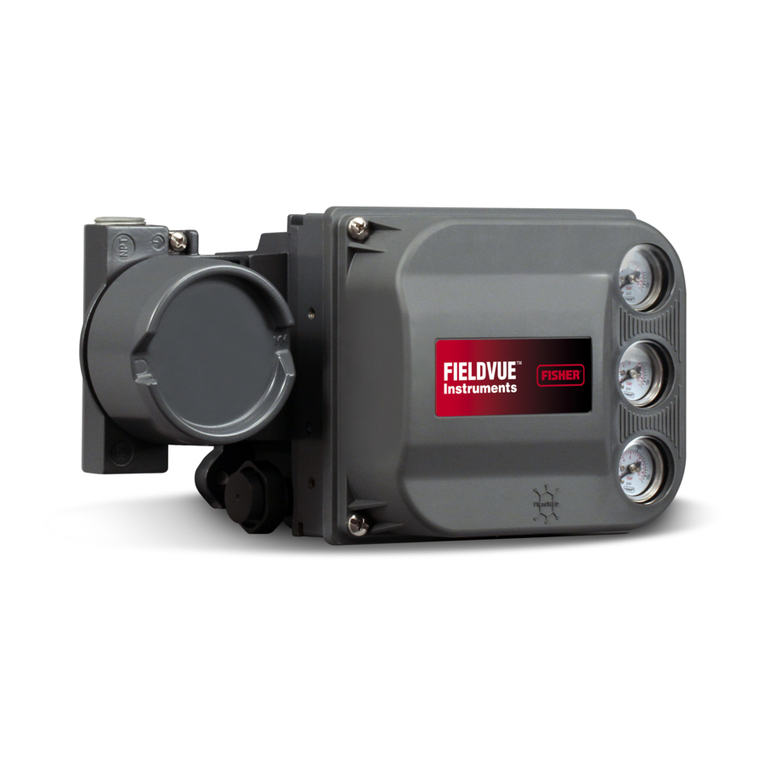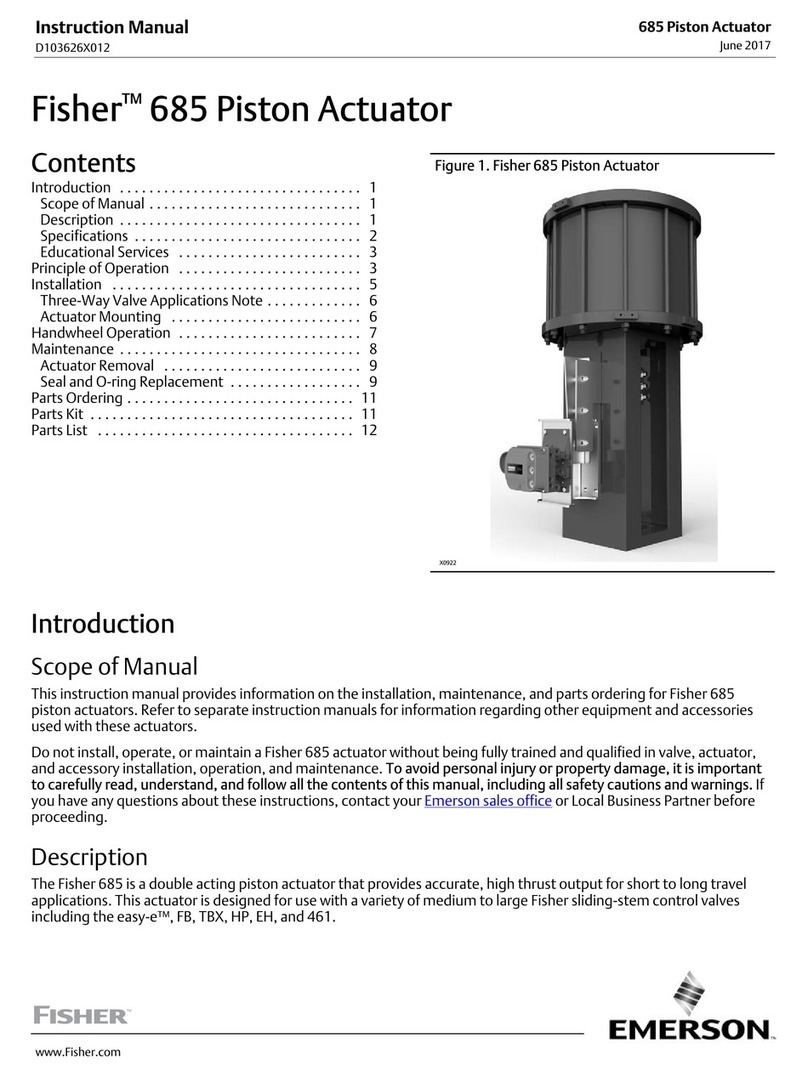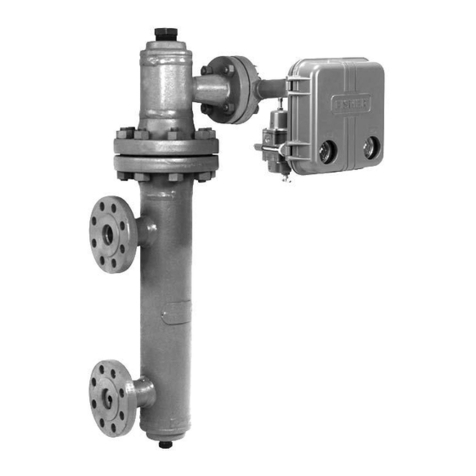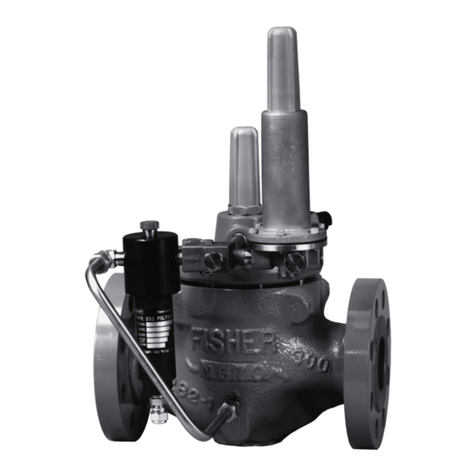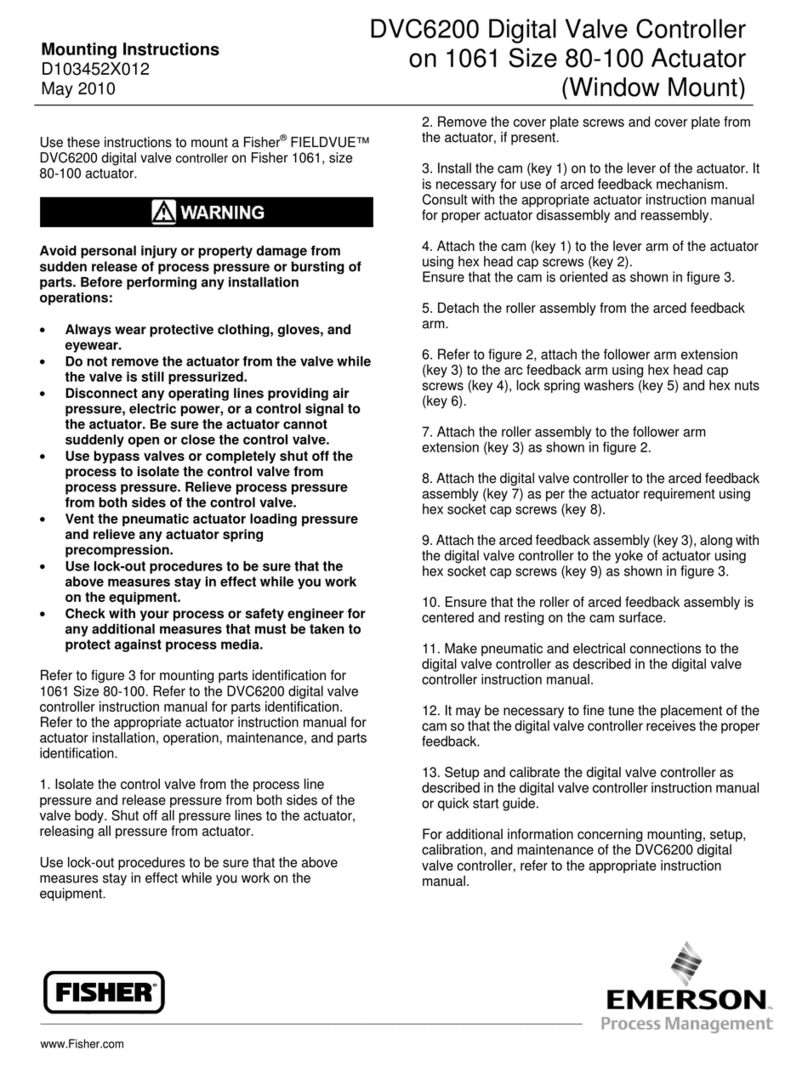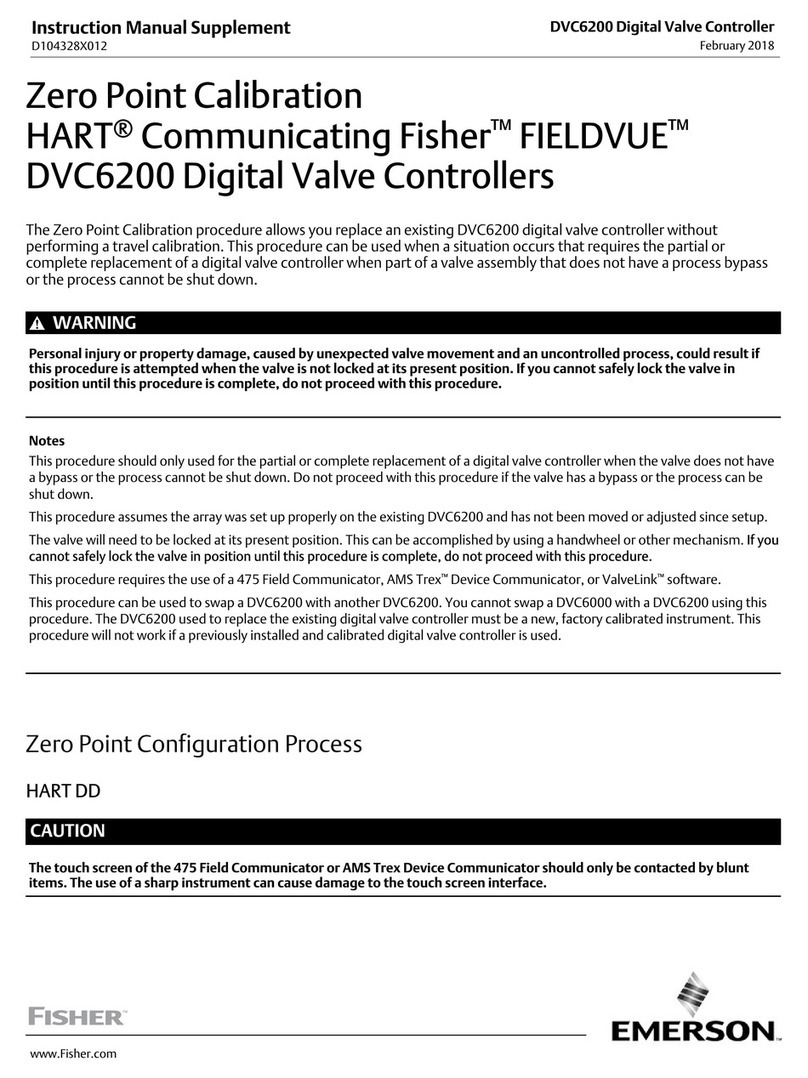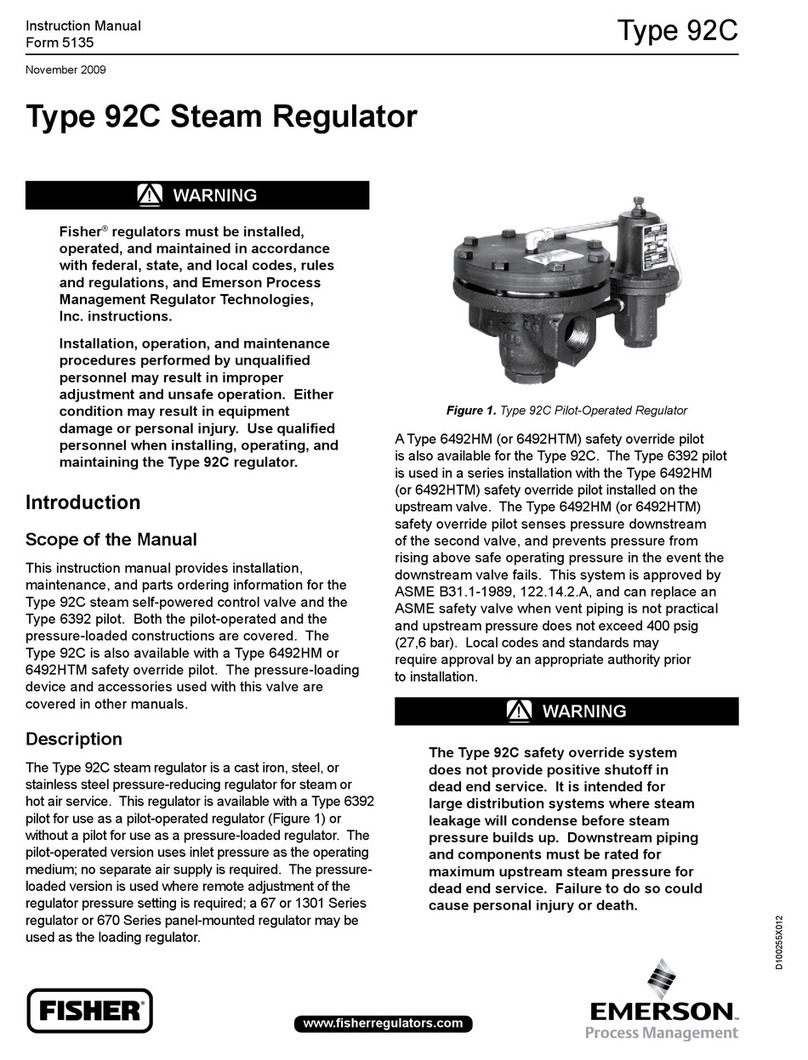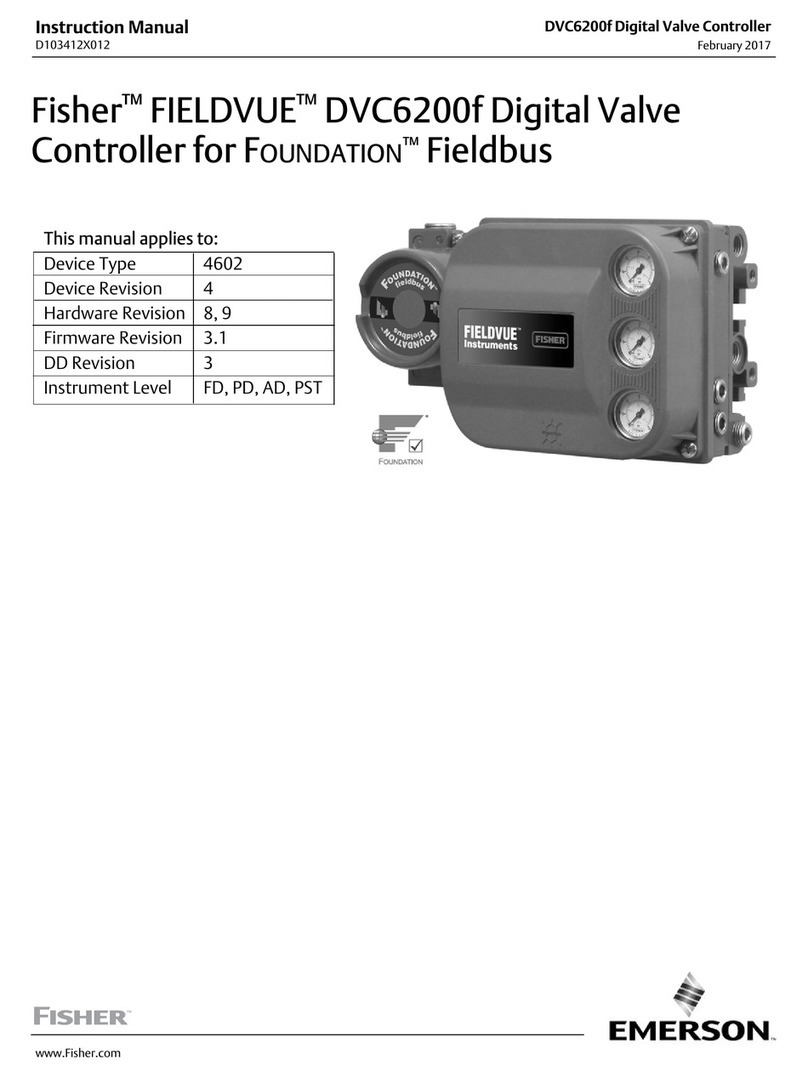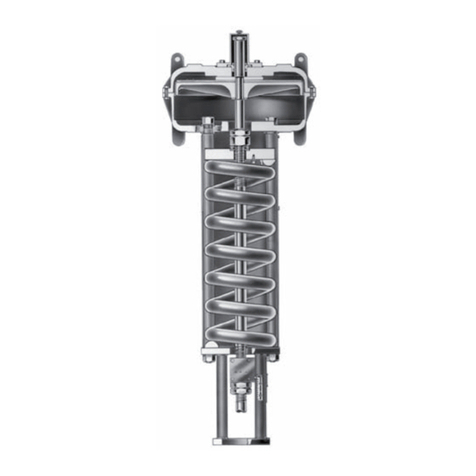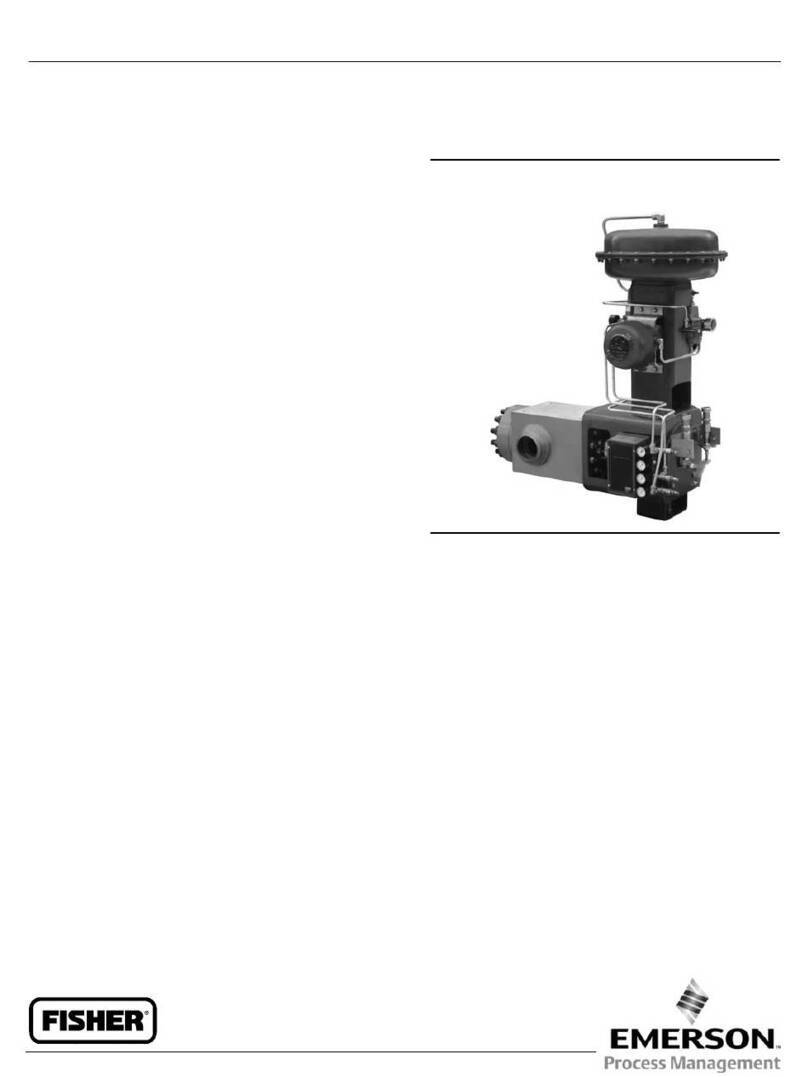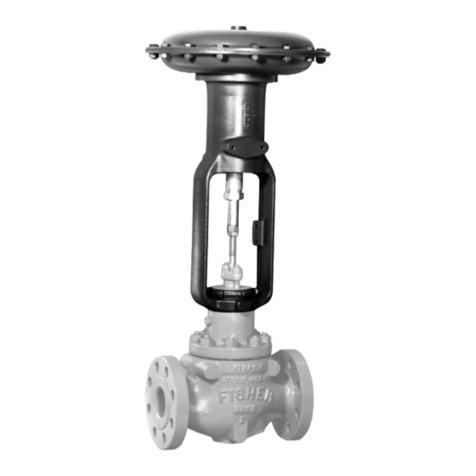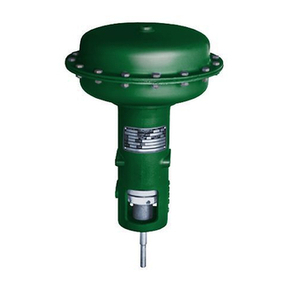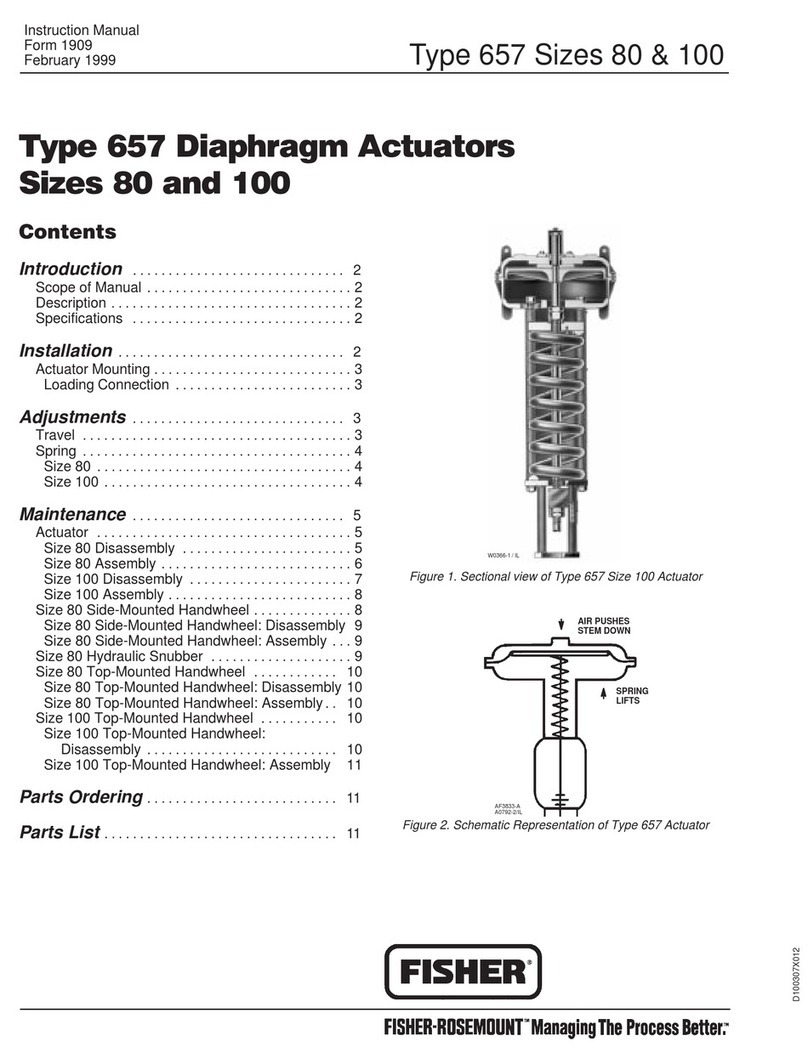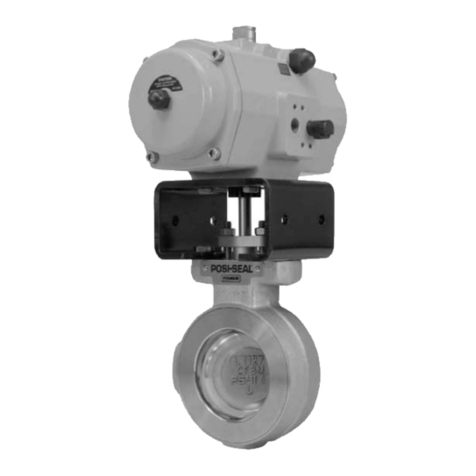
Instruction Manual
D103557X012
DVC6200 SIS Digital Valve Controller
April 2016
2
Contents (continued)
Section 4 Calibration 35.................
Calibration Overview 35.........................
Travel Calibration 36...........................
Auto Calibration 36........................
Manual Calibration 37......................
Pushbutton Calibration 38..................
Sensor Calibration 39..........................
Pressure Sensors 39........................
Analog Input Calibration 40.................
Relay Adjustment 41...........................
Double‐Acting Relay 41.....................
Single‐Acting Relays 42.....................
PST Calibration 43.............................
Section 5 Device Information,
Diagnostics, and Alerts 45...............
Overview 45...................................
Status & Primary Purpose Variables 45............
Device Information 45.........................
Service Tools 46................................
Device Status 46..............................
Alert Record 46...............................
Electronics 46.............................
Pressure 48...............................
Travel 48.................................
Travel History 49..........................
Alert Record 50............................
Status 50.................................
Diagnostics 51................................
Stroke Valve 51............................
Partial Stroke Test 51.......................
Demand Mode Tests 53.....................
Solenoid Valve Health Monitoring 55.........
Variables 55...................................
Section 6 Maintenance and
Troubleshooting 57.....................
Replacing the Magnetic Feedback Assembly 58......
Module Base Maintenance 58.....................
Tools Required 58.............................
Component Replacement 59....................
Removing the Module Base 59..................
Replacing the Module Base 60...................
Submodule Maintenance 60......................
I/P Converter 61...............................
Printed Wiring Board (PWB) Assembly 63..........
Pneumatic Relay 64............................
Gauges, Pipe Plugs or Tire Valves 65..............
Terminal Box 65................................
Removing the Terminal Box 66..................
Replacing the Terminal Box 66...................
Troubleshooting 67.............................
Checking Voltage Available 67....................
Restart Processor 67............................
DVC6200 SIS Technical Support Checklist 70........
Section 7 Parts 71......................
Parts Ordering 71...............................
Parts Kits 71...................................
PWB Assembly 71.............................
Parts List 72...................................
Housing 72...................................
Common Parts 73.............................
Module Base 73...............................
I/P Converter Assembly 73......................
Relay 73.....................................
Terminal Box 73...............................
Feedback Connection Terminal Box 73............
Pressure Gauges, Pipe Plugs, or Tire
Valve Assemblies 74.........................
DVC6215 Feedback Unit 74.....................
HART Filter 74................................
Line Conditioner 74............................
Appendix A Principle of Operation 81......
HART Communication 81........................
DVC6200 SIS Digital Valve Controller 81............
Appendix B Field Communicator
Menu Tree 85........................
Glossary 93............................
Index 99..............................
The FIELDVUE DVC6200 SIS Digital Valve Controller is a core component of the PlantWeb™ digital
plant architecture. The digital valve controller powers PlantWeb by capturing and delivering valve
diagnostic data. Coupled with ValveLink™ software, the DVC6200 SIS provides users with an accurate
picture of valve performance, including actual stem position, instrument input signal, and pneumatic
pressure to the actuator. Using this information, the digital valve controller diagnoses not only itself,
but also the valve and actuator to which it is mounted.
